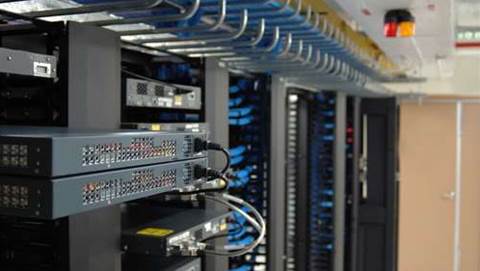Avneesh Saxena, vice-president for servers and PCs at IDC Asia-Pacific, said that users needed to understand whether their servers were to fulfil tactical or strategic goals within their organisations.
Potential return on investment (ROI)--especially in the tougher economic climate--should be closely assessed in each hardware purchase. For example, if a server was to function tactically, as purely an infrastructure building block, then the cost should be kept as low as possible. On the other hand, if a server was to help maintain or sharpen one's competitive edge or otherwise fulfil a strategic purpose, greater levels of investment might be required.
“A user organisation should seek greater competitive differentiation in its more strategic server investments and lesser on those driven by tactical goals," Saxena said. "An ROI focus will help reduce cost and justify IT investments to management in an easier manner than if otherwise was the case.”
He said increased costs in deploying servers more strategically could be countered over time by using an ROI-based model to assess purchases. Expenses incurred on IT management, software enhancements, or building unnecessary redundancies and disparate islands of technology within data centres could all be thereby reduced, he said.
Several new ideas in server development offered promising opportunities for businesses to hone their competitive edge, Saxena added. Consolidation and integration across servers and storage capacity were increasingly important when considered along with the trend for outsourcing business processes and functions, he said. “New computing-model visions such as IBM's e-business on demand, HP's adaptive infrastructure and Sun's N1 are also opportunities of transforming the way IT is used and leverage it more strategically to reduce cost and complexity and achieve better efficiency without compromising on performance.”
IDC forecasts growth in server sales in the Asia Pacific region, excluding Japan, to grow by 8.4 percent compounded annually to 2007. RISC Unix servers were strongest in that region to 2002 by revenue, while x86-Windows servers were strongest by units shipped. The market is expected to reach US$8.8 million by 2007 as per the current forecast, Saxena said.
“x86-32 servers are gaining wider acceptance due to improved performance driven by better hardware, robust operating systems and more application choices. [Also] 64-bit architectures such as Intel/Itanium and AMD/Opteron will make an impact in the enterprise space,” he said.
Linux servers were gaining penetration and would soon be seen in the commercial space while Windows 2003 would deepen Microsoft penetration in the enterprise, although RISC-Unix remained the platform of choice for business-critical workloads demanding higher reliability, scalability, availability and computing power, Saxena said.
He said resellers needed to align themselves with the opportunities in their market. While partnering with the right vendors was crucial, vendors also wanted to know what benefits the resellers bring to the table to also be ahead of their competitors.
“Value-addition is the name of the game here and [resellers] will increasingly need to create a unique positioning for themselves based on what extra they can do,” Saxena said. “Application expertise--self-owned application or agency--reseller networks, segment expertise, brand-pull and mindshare, and service expertise are areas that will be of increasing importance.”
He said that resellers needed to differentiate servers that were key business drivers, such as core-banking, ATM, e-business for banking and securities verticals or CRM and business processing for manufacturing verticals, from those that were deployed merely to sustain a business, such as email, collaborative software, file-sharing or web-hosting in many cases. “Without proper functioning of [business-critical] servers a business may lose its competitive edge and even collapse in some cases,” Saxena said.




.png&h=140&w=231&c=1&s=0)





 iTnews Executive Retreat - Security Leaders Edition
iTnews Executive Retreat - Security Leaders Edition












_(1).jpg&h=140&w=231&c=1&s=0)



